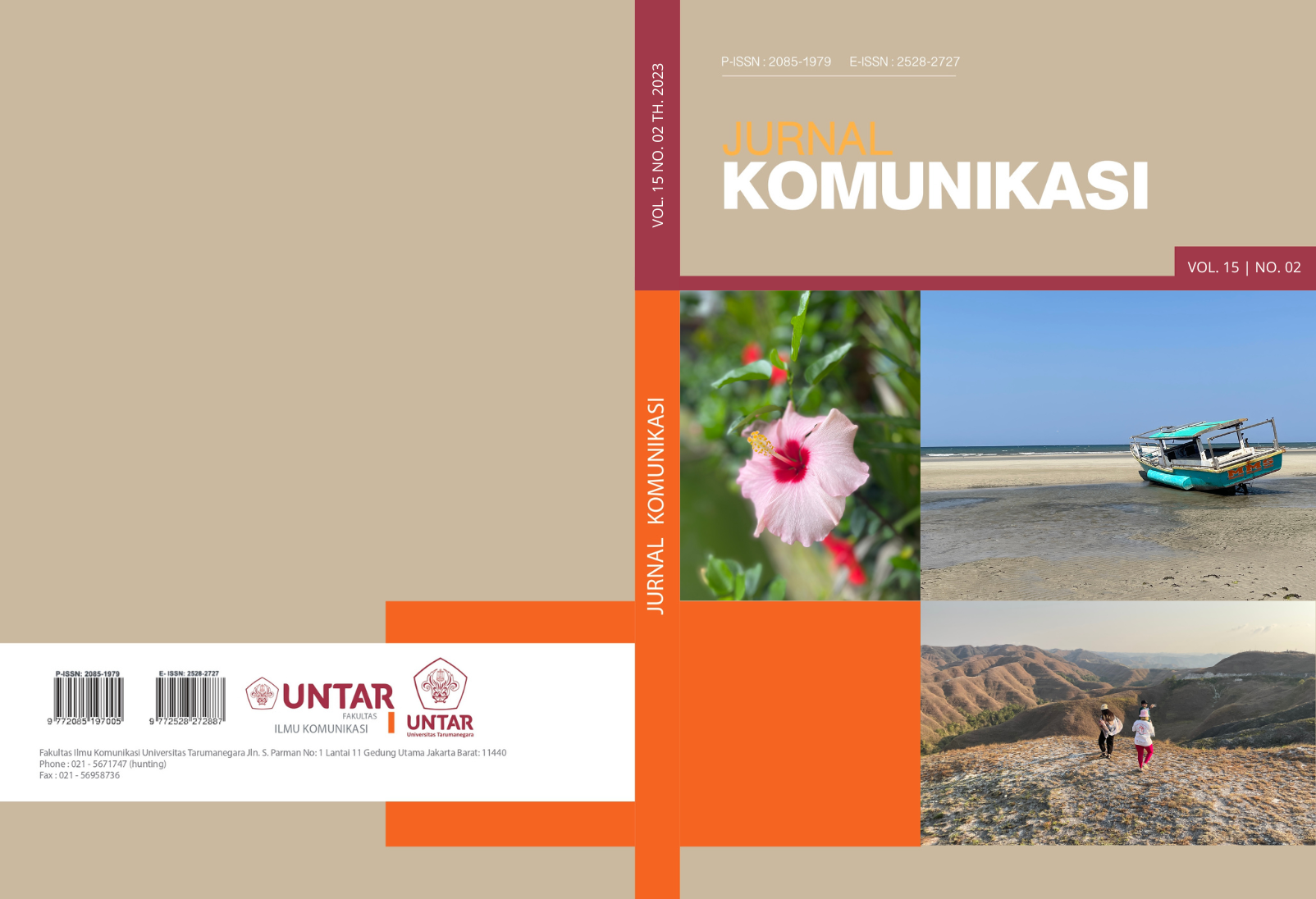Social Media Marketing Activities (SMMA) As A Brand Formation Strategy A Study Of The Brand Image Formation Strategy Of Tasikmalaya Embroidery Products
Main Article Content
Abstract
Branding is an effort to establish a brand, both products, companies, and other objects. Forming a brand requires the right strategy to achieve the predefines goals, where the goal is usually quantifiable objectives. The formation of a brand will be proven by the behavior changes of the targeted public of the brand object because the branding strategy will usually be aimed at a specific public target. Social Media Marketing Activities (SMMA) is a strategy initially developed for marketers in promoting, however, its application has expanded to encompass the formation of product brands and companies. The method of writing this article is exploratory, wherein the author tries to explore the marketing activities of the embroidery industry in Tasikmalaya, which are then analyzed and associated with existing phenomena. The results indicate that SMMA is used by the embroidery industry on a large and small scale because of its ease of application, but although it is easy SMMA must be accompanied by other tools, because in forming a company brand it is not enough just to base on social media activities, but other activities that will invite public experience in interacting with these products and companies. Positive experience is the main factor in shaping the brand image of a product or company.
Article Details
Section

This work is licensed under a Creative Commons Attribution-ShareAlike 4.0 International License.
This work is licensed under a Jurnal Komunikasi Creative Commons Attribution-ShareAlike 4.0 International License.How to Cite
References
Aaker, D. A. (1991). Managing Brand Equity Capitalizing on the Value of a Brand Name.
Acharya, M. (2018). The emotional branding process. In Brand Culture and Identity: Concepts, Methodologies, Tools, and Applications (Vol. 1, pp. 216–229). IGI Global. https://doi.org/10.4018/978-1-5225-7116-2.ch013
Albors, J., Ramos, J. C., & Hervas, J. L. (2008). New learning network paradigms: Communities of objectives, crowdsourcing, wikis and open source. International Journal of Information Management, 28(3), 194–202. https://doi.org/10.1016/j.ijinfomgt.2007.09.006
Alizadeh, A., Moshabaki, A., Khodadad Hoseini, S. H., & Kordnaeij, A. (2014). Design and formulation of branding strategy selection model in organizations: multi business firms. International Journal of Academic Research, 6(6), 416–430. https://doi.org/10.7813/2075-4124.2014/6-6/b.64
Kotler, P., & Pfoertsch, W. (2006). B2B Brand Management.
Bajari, A. (2015). Metode Penelitian Komunikasi (Pertama). Simbiosa Rekatama Media.
Borić, S., Stanisavljev, S., Kavalić, M., Vlahović, M., & Tobolka, E. (2016). Analyisis of digital marketing and branding for the purpose of understanding the consumers in digital age. 375–381. https://doi.org/10.20544/aiit2016.45
Constantinides, E. (2004). Influencing the online consumer’s behavior: The Web experience. In Internet Research (Vol. 14, Issue 2, pp. 111–126). https://doi.org/10.1108/10662240410530835
Constantinides, E. (2014). Foundations of Social Media Marketing. Procedia - Social and Behavioral Sciences, 148, 40–57. https://doi.org/10.1016/j.sbspro.2014.07.016
Genep Sukendro, G., & Pandrianto, N. (2019). Diagnosa Komunikasi Brand Activation Dan Media Digital Atas Eksistensi Brand Studio Rekaman Lokananta. Jurnal Komunikasi, 11(1), 92–107. https://doi.org/10.24912/jk.v10i1.4287
Kapferer, J.-N. (2012). The New Strategic Brand Management i.
Keller, K. L. (2015). Strategic Brand Management Building, Measuring, and Managing Brand Equity Global Edition.
Keller, K. L., & Keller, K. L. (2003). Understanding brands, branding and brand equity. Interactive Marketing, 5(1), 7–20.
Khan, M., Rubab, S., Awan, T. M., Khan, M., Malik, N., Daniyal, M., Ashraf, M. Z., & Kakar, A. S. (2022). TheRelationship Between Social Media Marketing Activities and Brand Attachment_AnEmpiricalStudyfromPakistan. Journal of Asian Finance, Economics and Business, 9(6), 0219–0230.
Koay, K. Y., Ong, D. L. T., Khoo, K. L., & Yeoh, H. J. (2021). Perceived social media marketing activities and consumer-based brand equity : Testing a moderated mediation model. Asia Pacific Journal of Marketing and Logistics, 33(1), 53–72. https://doi.org/10.1108/APJML-07-2019-0453
Koay, K. Y., Teoh, C. W., & Soh, P. C.-H. (2021). Instagram influencer marketing: Perceived social media marketing activities and online impulse buying. First Monday. https://doi.org/10.5210/fm.v26i9.11598
Kwan Soo Shin, S., Amenuvor, F. E., Basilisco, R., & Owusu-Antwi, K. (2019). Brand Trust and Brand Loyalty: A Moderation and Mediation Perspective. Current Journal of Applied Science and Technology, 1–17. https://doi.org/10.9734/cjast/2019/v38i430376
Rowles, D. (2018). Digital Branding. Strategic Brand Management Building, Measuring, and Managing Brand Equity Global Edition. (n.d.).
Temporal, P. (2010a). Advanced Brand Management. John Wiley & Sons,Inc (Asia).
Temporal, P. (2010b). MANAGING BRANDS IN A CHANGING WORLD.

